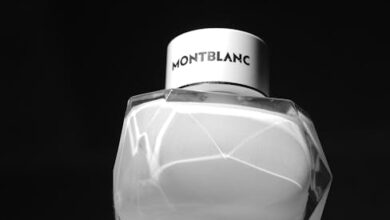The Icy Allure: What Science Says About the Benefits

Walk onto any wellness blog, scroll through Instagram, or even chat with an athlete, and chances are you’ll encounter the buzz around cold plunging. That unmistakable gasp for air, the shiver, the subsequent glow — it’s a trend that’s seemingly exploded out of nowhere, moving from fringe practice to mainstream marvel. From celebrities endorsing their daily dip to everyday individuals seeking an edge, the icy allure is undeniable. But as with any wellness sensation, a critical question arises: Is cold plunging truly good for you, or is it just another fleeting fad in the ever-evolving landscape of health hacks?
In 2025, with more accessible cold plunge options and a growing body of research, it’s time to dive beneath the surface-level hype. We’ll explore the tangible benefits, the potential drawbacks, and ultimately help you decide if embracing the chill is a worthwhile addition to your routine. Is it just a moment of discomfort for Instagram likes, or is there real, science-backed goodness waiting on the other side of that frosty barrier?
The Icy Allure: What Science Says About the Benefits
For centuries, various cultures have embraced cold exposure for health and ritualistic purposes. Now, modern science is starting to catch up, offering explanations for some of the incredible feelings people report after a cold plunge. It’s more than just a jolt; it’s a cascade of physiological responses designed to awaken the body and mind.
The Dopamine Rush and Mood Boost
Perhaps one of the most immediate and addictive effects of cold plunging is the mental clarity and mood elevation. When your body is suddenly exposed to cold water, it triggers a significant release of norepinephrine, a hormone and neurotransmitter that plays a crucial role in attention, focus, and mood regulation. This isn’t just a fleeting feeling; studies suggest that cold exposure can lead to a sustained increase in dopamine, the “feel-good” hormone, by up to 2.5 times for several hours post-plunge. Think of it as hitting the reset button on your brain, leaving you feeling invigorated and mentally sharp.
Inflammation and Recovery
This is where many athletes initially gravitated towards cold water immersion. The idea is simple: cold constricts blood vessels, reducing blood flow to inflamed areas and minimizing swelling. After an intense workout, an ice bath or cold plunge can help flush metabolic waste products, reduce muscle soreness (DOMS), and accelerate recovery. While research continues to refine optimal protocols, anecdotal evidence from professional athletes and weekend warriors alike consistently points to improved recovery times and reduced pain after strenuous activity. It’s not just about muscles, though; systemic inflammation reduction is a broader benefit being explored.
Metabolic Health and Immune System
Ever heard of brown adipose tissue (BAT) or “brown fat”? Unlike white fat, which stores energy, brown fat generates heat by burning calories. Regular cold exposure has been shown to activate and even increase brown fat activity, potentially boosting your metabolism and contributing to better glucose regulation. Beyond metabolism, cold plunging may also prime your immune system. While the exact mechanisms are still being elucidated, some studies, particularly those involving controlled cold exposure methods like the Wim Hof Method, suggest an enhanced immune response, making your body more resilient to common ailments. It’s not about getting sick less often, but rather strengthening your body’s ability to fight back.
Mental Fortitude and Stress Resilience
Beyond the physical, there’s a profound psychological component to cold plunging. Voluntarily stepping into an intensely uncomfortable situation and choosing to stay (even for just a few minutes) builds incredible mental resilience. It teaches your body and mind to manage stress in a controlled environment. The initial shock triggers a fight-or-flight response, but as you learn to breathe through it, you effectively train your nervous system to remain calm under duress. This ability to regulate your physiological response to stress can spill over into other areas of life, enhancing your capacity to handle everyday pressures with greater equanimity.
Beyond the Hype: Understanding the Risks and Realities
While the benefits are compelling, it’s crucial to approach cold plunging with a clear understanding of its potential risks and limitations. It’s tempting to view any powerful wellness tool as a silver bullet, but cold water therapy, like any intense practice, demands respect and caution.
The Immediate Dangers
Let’s be real, diving into icy water isn’t a leisurely stroll. The sudden shock of cold can trigger a gasp reflex, causing involuntary hyperventilation, which can be dangerous, especially if your head goes underwater. For individuals with underlying health conditions, particularly cardiovascular issues like heart disease, high blood pressure, or Raynaud’s phenomenon, cold exposure can be extremely risky. The rapid constriction of blood vessels can put undue strain on the heart. Always consult with a doctor before incorporating cold plunging into your routine, especially if you have pre-existing medical conditions.
Furthermore, prolonged exposure can lead to hypothermia, a dangerously low body temperature. While most controlled cold plunges are short enough to avoid this, it’s a risk to be aware of, especially with DIY setups or in uncontrolled environments.
Not a Magic Bullet
Cold plunging, while powerful, is a complementary wellness practice, not a standalone cure-all. It works best when integrated into a holistic healthy lifestyle that includes a balanced diet, regular exercise, adequate sleep, and effective stress management. Expecting a cold plunge to negate poor lifestyle choices is unrealistic. It’s an enhancer, not a replacement for fundamental health practices.
Moreover, the results aren’t uniform. What works wonders for one person might yield less dramatic results for another. Individual physiology, consistency, water temperature, and duration all play a role in the efficacy of the practice.
Accessibility and Cost
Dedicated cold plunge tubs can be a significant investment, ranging from several thousand dollars for advanced models to more modest but still substantial costs for basic setups. While community facilities or gyms might offer access, consistent use can add up. DIY ice baths using a large tub and bags of ice are a more accessible option, but they still require effort, planning, and a consistent supply of ice. The barrier to entry, both financial and logistical, can be a reality for many.
Making the Plunge: Who Should Try and How to Start (Safely)
If, after weighing the pros and cons, you feel cold plunging aligns with your wellness goals, the next step is to approach it intelligently and safely. It’s not about being a hero; it’s about being smart.
Who Benefits Most?
Individuals seeking improved mood, reduced inflammation, enhanced recovery from exercise, or a boost in mental resilience are prime candidates. Athletes, those looking to manage stress, or even people simply curious about pushing their comfort zone may find it rewarding. Remember, the mental benefits are often as profound as the physical ones.
A Measured Approach
Don’t jump straight into an ice bath for ten minutes. Start small. Cold showers are an excellent gateway. Begin by ending your regular warm shower with 30-60 seconds of cold water. Gradually increase the duration and decrease the temperature as you adapt. When ready for a plunge, start with water temperatures around 50-60°F (10-15°C) for just 1-2 minutes. Over time, you can slowly decrease the temperature and extend the duration, never pushing past your comfortable but challenging limit. Consistency, even with shorter exposures, is often more beneficial than infrequent, extreme plunges.
Listen to Your Body
This is perhaps the most crucial advice. There’s a fine line between pushing your comfort zone and pushing yourself into danger. Shivering is normal, but uncontrolled shivering, dizziness, numbness, or extreme pain are warning signs to get out immediately. Never cold plunge alone, especially when starting out. Have a clear plan for warming up afterward, such as toweling off quickly, putting on warm, dry clothes, and sipping a warm drink. Your body’s response is your best guide.
So, is cold plunging good for you in 2025? The science increasingly suggests a resounding “yes” for a multitude of benefits, from boosting mood and recovery to enhancing metabolic health and mental resilience. However, this comes with important caveats: it’s not without risks, it demands a thoughtful approach, and it’s certainly not for everyone. If you’re healthy, curious, and willing to embrace a moment of profound discomfort for potential long-term gains, cold plunging could be a powerful addition to your wellness toolkit. Like many things truly beneficial, the reward often lies just beyond the edge of your comfort zone, waiting for you to take the plunge.





